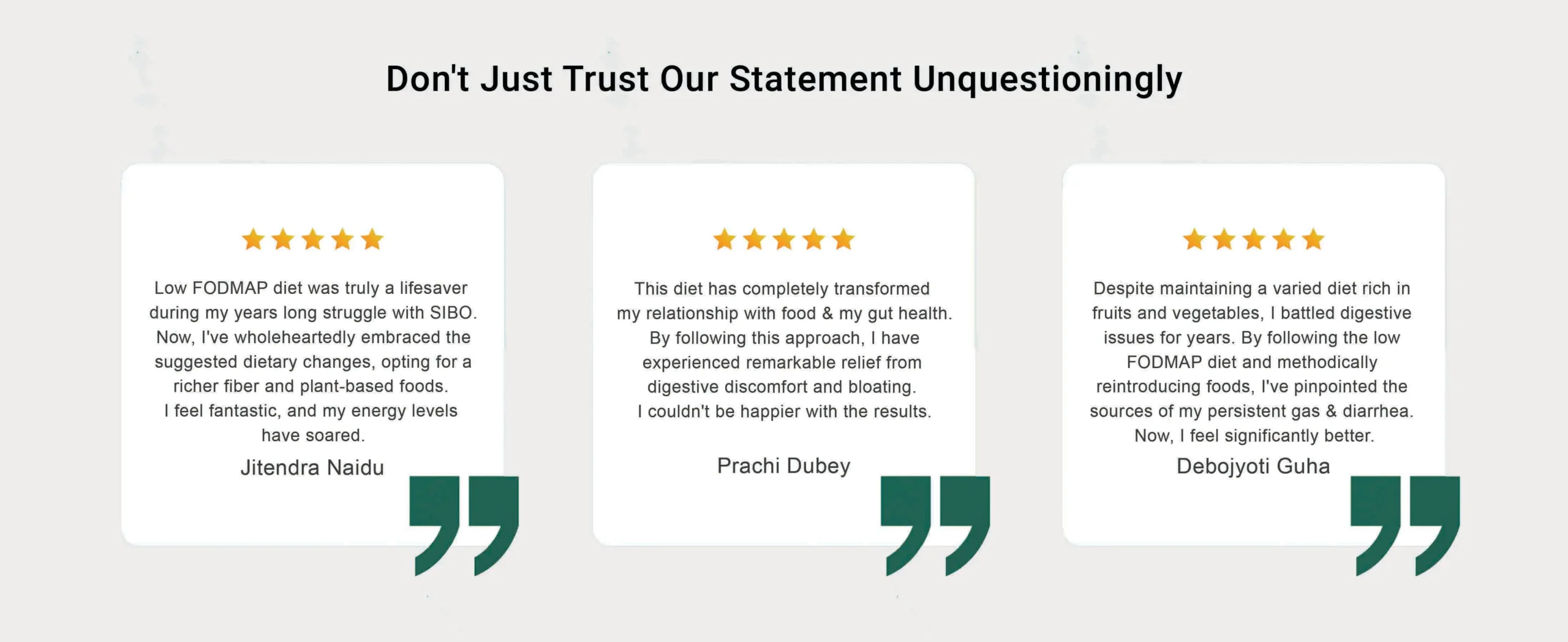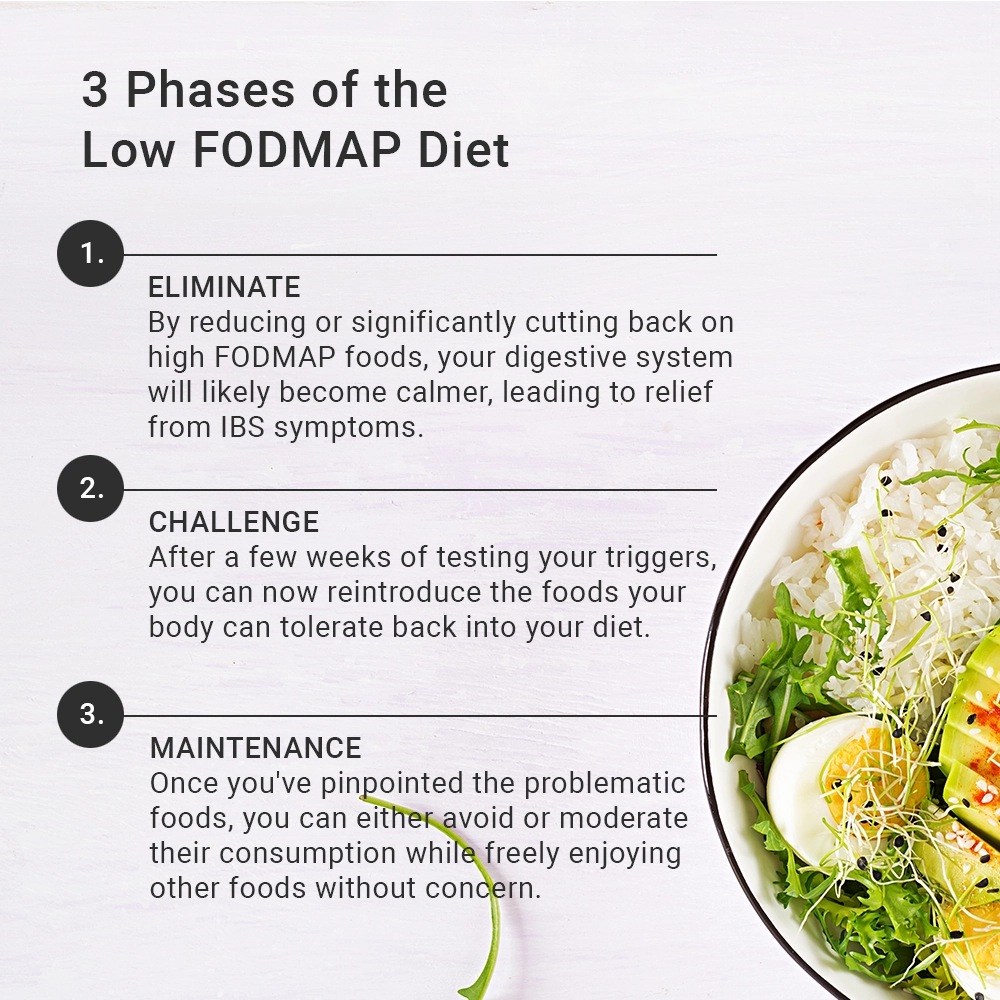


Specific sugars that could potentially lead to gastrointestinal discomfort. This dietary approach is crafted to assist individuals managing irritable bowel syndrome (IBS) and/or small intestinal bacterial overgrowth (SIBO) in determining which foods provoke symptoms and which alleviate them.
FODMAP stands for fermentable oligosaccharides, disaccharides, monosaccharides and polyols, which are short-chain carbohydrates (sugars) that the small intestine absorbs poorly. Some people experience digestive distress after eating them. Symptoms include: Cramping, Diarrhea, Constipation, Stomach bloating & Gas and flatulence.
The Low FODMAP diet entails a three-phase elimination plan:
Initially, you eliminate specific foods (high FODMAP foods) from your diet.
Subsequently, you gradually reintroduce these foods to identify any triggers.
Once you’ve pinpointed the problematic foods, you can either avoid or moderate their consumption while freely enjoying other foods without concern.
What can I eat on the FODMAP diet?
Foods that trigger symptoms vary from person to person.
To ease IBS and SIBO symptoms, it’s essential to avoid high FODMAP foods that aggravate the gut, including:
- Dairy-based milk, yogurt and ice cream
- Wheat-based products such as cereal, bread and crackers
- Beans and lentils
- Some vegetables, such as artichokes, asparagus, onions and garlic
- Some fruits, such as apples, cherries, pears and peaches
Instead, base your meals around low FODMAP foods such as:
- Eggs and meat
- Certain cheeses such as brie, Camembert, cheddar and feta
- Almond milk
- Grains like rice, quinoa and oats
- Vegetables like eggplant, potatoes, tomatoes, cucumbers and zucchini
- Fruits such as grapes, oranges, strawberries, blueberries and pineapple













Kailash Goenka –
I was skeptical at first, but the low FODMAP diet has exceeded my expectations. It’s simple yet incredibly effective. My stomach feels calmer, and I have more energy throughout the day. Five stars!